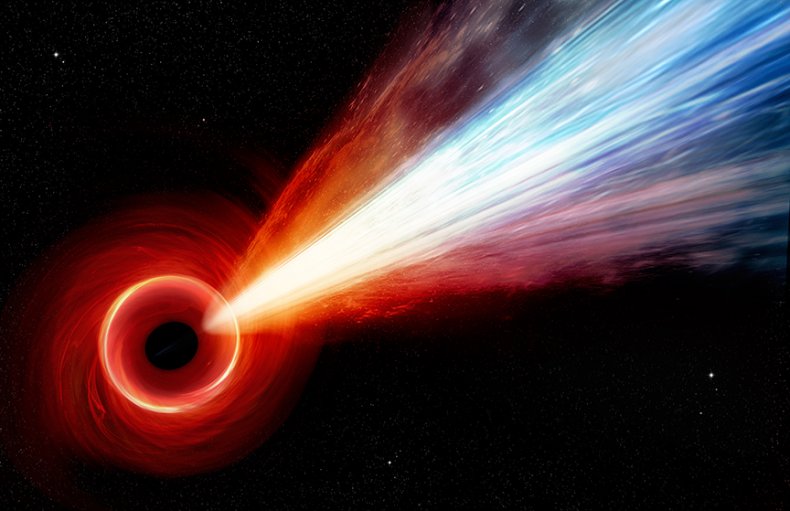Using a sophisticated supercomputer, astronomers have modeled the region of space around the supermassive black hole at the center of the galaxy Messier 87 (M87)— potentially discovering the mechanism that causes it to launch jets of plasma at near light speed.
The supermassive black hole at the heart of M87, located 55 million light-years from Earth, made history in April 2019 when it became the first black hole to be imaged by humanity.
Event Horizon Telescope Collaboration
The black hole, which has a mass greater than 6.5 billion suns, is surrounded by a disc of gas and dust that gradually falls to its surface and is swallowed.
A jet of plasma is launched from the center of this accretion disc at close to the speed of light and stretches for 6,000 light-years. This jet must be powered by a source of tremendous energy, that likely comes from the enormous gravitational influence of the black hole itself.
Yet exactly how this jet is formed and what keeps it stable across such an immense distance is currently a mystery to scientists.
An international team of researchers has modeled the region around the black hole in high detail, using state-of-the-art three-dimensional supercomputer simulations. This allowed the team to trace photons—particles of light—as they travel around the inner region of the disc.
Translating the results of this model—including temperatures, densities of matter, and magnetic fields—into radio images, the team then compared these to actual observations of the black hole and its surrounding region made by radio telescopes.
They found that their model matched well with 30 years of actual observations of M87’s supermassive black hole. The team’s research is published in the journal Nature Astronomy.
“Our theoretical model of the electromagnetic emission and of the jet morphology of M87 matches surprisingly well with the observations in the radio, optical and infrared spectra,” Institute of Theoretical Physics of Goethe University Frankfurt researcher and the paper’s lead author, Dr. Alejandro Cruz-Osorio, said. “This tells us that the supermassive black hole M87 is probably highly rotating and that the plasma is strongly magnetized in the jet, accelerating particles out to scales of thousands of light-years.”
To build these models, the supercomputer used a staggering million CPU hours per simulation. It had to simultaneously solve the equations of the greatest minds in physics, including the field equations of general relativity, devised by Albert Einstein, the equations of electromagnetism by James Maxwell, and the equations of fluid dynamics by Leonhard Euler.
As well as revealing that astrophysical jets launched by feeding black holes could be powered by high rotation speed and magnetization, the model is another confirmation of Einstein’s most momentous achievement—general relativity.
“The fact that the images we calculated are so close to the astronomical observations is another important confirmation that Einstein’s theory of general relativity is the most precise and natural explanation for the existence of supermassive black holes in the center of galaxies,” Institute for Theoretical Physics at Goethe University Frankfurt researcher and paper co-author Professor Luciano Rezzolla said. “While there is still room for alternative explanations, the findings of our study have made this room much smaller.”

X-ray: NASA/CXO/JPL/T. Connor; Optical: Gemini/NOIRLab/NSF/AURA; Infrared: W.M. Keck Observatory/CXC/M.Weiss/NASA